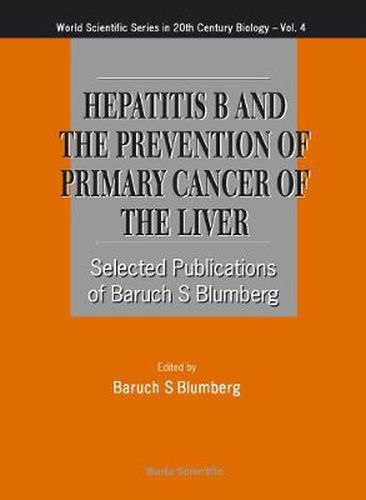Readings Newsletter
Become a Readings Member to make your shopping experience even easier.
Sign in or sign up for free!
You’re not far away from qualifying for FREE standard shipping within Australia
You’ve qualified for FREE standard shipping within Australia
The cart is loading…






This work comprises a narrative account of research on the hepatitis B virus (and related subjects) and selected reprints from the laboratory of Nobel laureate Baruch S. Blumberg and his colleagues. The hepatitis B virus (HBV) is one of the ten most common deadly infectious diseases and is responsible for 1.1 million deaths a year worldwide. Research in the laboratory of Baruch S. Blumberg resulted in the discovery of HBV and the invention of the vaccine which protects one against it. The research began as an apparently esoteric study of human biochemical and immunologic variation. This required field-work in Africa, the Arctic, the Pacific, the Americas, and in many other locations and populations. The overall goal was to identify inherited biological differences which were related to differing responses to disease-causing agents. The virus was discovered using the blood of an infected person who had developed the antibody, to detect the virus present in another infected person who had become a carrier of the virus. Screening of blood donors led to the near-elimination of post-transfusion hepatitis B.
$9.00 standard shipping within Australia
FREE standard shipping within Australia for orders over $100.00
Express & International shipping calculated at checkout
This work comprises a narrative account of research on the hepatitis B virus (and related subjects) and selected reprints from the laboratory of Nobel laureate Baruch S. Blumberg and his colleagues. The hepatitis B virus (HBV) is one of the ten most common deadly infectious diseases and is responsible for 1.1 million deaths a year worldwide. Research in the laboratory of Baruch S. Blumberg resulted in the discovery of HBV and the invention of the vaccine which protects one against it. The research began as an apparently esoteric study of human biochemical and immunologic variation. This required field-work in Africa, the Arctic, the Pacific, the Americas, and in many other locations and populations. The overall goal was to identify inherited biological differences which were related to differing responses to disease-causing agents. The virus was discovered using the blood of an infected person who had developed the antibody, to detect the virus present in another infected person who had become a carrier of the virus. Screening of blood donors led to the near-elimination of post-transfusion hepatitis B.